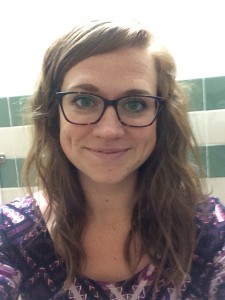MIIS Program: Public Administration, Spring 2017
Traveling during J-Term to: DPMI Monterey
A look at a past immersive learning experience…
In this excerpt I’m talking about my experience living in a very old indigenous society in Ecuador, and the challenges the people faced as their government changed without them.
Panecillo and the surrounding villages hold on to their indigenous population like the roots of an ancient tree. Most of the women walk around in full Anaco, the traditional dress: an embroidered white blouse, blue ankle-length skirt, hair braided back, and a company of tiny golden beads clamped around their neck. At the mass held at the school, the choir alternates singing in Kichwa and Spanish, but all odes to Jesus. We eat potatoes with corn, the food of these hills and the food of these people. It is a place that is steeped in tradition. Yet, Ecuador is changing quickly. With Raphael Correa at the helm, the country is experiencing sweeping governmental changes. Socialized medicine, tighter immigration laws, a growing partnership with countries that don’t ally themselves with the United States. An interesting move when Ecuador is so entrenched in the U.S. economically that they use the dollar. Everywhere here are signs that Correa is trying to unify the country and create a deep sense of nationalism. Signs cry out, “Todas, Todos Somos Ecuador.” We are all Ecuador. It is an ambitious task. Ecuador has had an almost caste like division here for as long as it has been a country, blacks on bottom, then indigenous, then mestizos, then Spanish. The other intern pointed out the contrast of the slow moving traditional society with the rapidly changing government. How does a place like Panecillo, a place created and maintained by it’s indigenous identity, keep up with the winds of changing sweeping the country?
I have always been a lover of stories. I am an avid reader and writer. In my senior year at the University of Oregon, I participated in a year long intensive fiction writing course called the Kidd Tutorial. It’s structure was set up like a year in an MFA program. I was with three other students and a professor, and we were required to read and write until we couldn’t think straight. I was exposed to writers I had never heard of, writing styles that shocked me, and a deeper understanding of the work it takes to craft a good story. I also learned about how narratives shape our lives, both in what we tell ourselves and what we tell each other.




You must be logged in to post a comment.